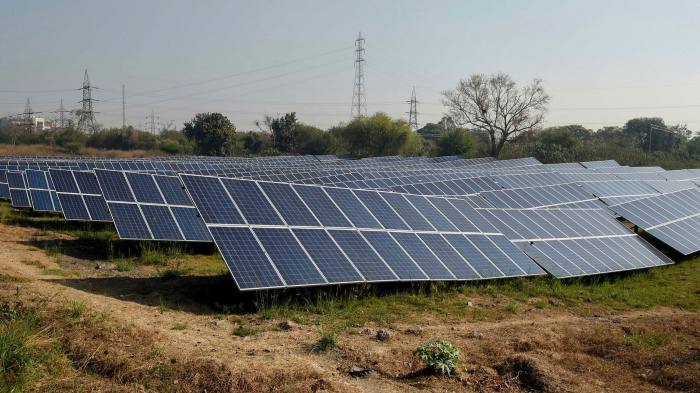The Earthshot Prize 2022 The Earthshot prize is an award given to five winners that created some projects that could help our planet face some of the most important challenges...
Read MoreBocconi Students for Sustainable Finance
Bocconi Students for Sustainable Finance

The dark side of credits for offsetting CO2 emissions
Nowadays, with the increasing effort toward improving climate conditions, companies are rushing in order to buy credits for compensating their CO2 emissions.
For the principle of offsetting the projects that generate credits should:
The issue regard the fact that some of the most abundant credits are from big renewable energy schemes developed by well-funded power groups (Berkeley Carbon Trading Project). Today those account for about a third of the more than 1bn credits issued to date.
Climate policy experts are questioning the validity of these renewables offsets: “If you buy carbon credits from a large-scale renewable electricity project you are making zero difference for the climate” said Gilles Dufrasne of Carbon Market Watch. But offsets from renewable energy projects were among the most plentiful and cheapest available and “most people are going to take the easiest way to transact”. Indeed, a 2$ renewables credit often has represented a easy choice for many companies, as said Jonathan Goldberg, chief executive of advisory group Carbon Direct. Credits from other project types, such as carbon capture schemes, can cost much more.
Berkeley data shows that among the renewables projects with the most available credits — 3.1m, according to the data — there is a solar-power development by Mumbai-listed Adani Green Energy, tycoon Gautam Adani’s renewables business in which French oil major Total has a 20 per cent stake. Adani has said he intends to build the world’s largest solar-power company by 2025. The project, designed to deliver 990MW of power to five states in India, is expected to produce 15.5m credits over 10 years, linked to emissions savings from 2017 onwards. Recent buyers of the credits include aerospace manufacturer Boeing.
As founded by the Haya’s 2010 PhD, the large majority of earlier renewable energy offsetting projects in India and China were not additional. Verra and Gold Standard, two certification bodies, stopped approving most new renewables projects from the start of 2020. Large projects that applied before the deadline were “more frequently rejected” than smaller schemes.
Also, Barbara Haya, researcher at the University of California, Berkeley, thinks that the rules governing which projects could generate offsets should be tightened up urgently. Indeed “We continue to produce more and more credits that clearly do not represent real emissions reductions,” she said.
Author: Giorgia Massi

The dark side of credits for offsetting CO2 emissions
Nowadays, with the increasing effort toward improving climate conditions, companies are rushing in order to buy credits for compensating their CO2 emissions.
For the principle of offsetting the projects that generate credits should:
The issue regard the fact that some of the most abundant credits are from big renewable energy schemes developed by well-funded power groups (Berkeley Carbon Trading Project). Today those account for about a third of the more than 1bn credits issued to date.
Climate policy experts are questioning the validity of these renewables offsets: “If you buy carbon credits from a large-scale renewable electricity project you are making zero difference for the climate” said Gilles Dufrasne of Carbon Market Watch. But offsets from renewable energy projects were among the most plentiful and cheapest available and “most people are going to take the easiest way to transact”. Indeed, a 2$ renewables credit often has represented a easy choice for many companies, as said Jonathan Goldberg, chief executive of advisory group Carbon Direct. Credits from other project types, such as carbon capture schemes, can cost much more.
Berkeley data shows that among the renewables projects with the most available credits — 3.1m, according to the data — there is a solar-power development by Mumbai-listed Adani Green Energy, tycoon Gautam Adani’s renewables business in which French oil major Total has a 20 per cent stake. Adani has said he intends to build the world’s largest solar-power company by 2025. The project, designed to deliver 990MW of power to five states in India, is expected to produce 15.5m credits over 10 years, linked to emissions savings from 2017 onwards. Recent buyers of the credits include aerospace manufacturer Boeing.
As founded by the Haya’s 2010 PhD, the large majority of earlier renewable energy offsetting projects in India and China were not additional. Verra and Gold Standard, two certification bodies, stopped approving most new renewables projects from the start of 2020. Large projects that applied before the deadline were “more frequently rejected” than smaller schemes.
Also, Barbara Haya, researcher at the University of California, Berkeley, thinks that the rules governing which projects could generate offsets should be tightened up urgently. Indeed “We continue to produce more and more credits that clearly do not represent real emissions reductions,” she said.
Author: Giorgia Massi
RELATED
The Earthshot Prize 2022 The Earthshot prize is an award given to five winners that created some projects that could help our planet face some of the most important challenges...
Read MoreThe Key Role of Natural Gas As a Transition Fuel In recent years sustainable energy has surely been the center of attention, with worldwide spending on renewable energy surpassing even...
Read More